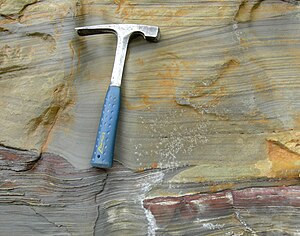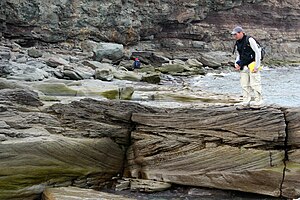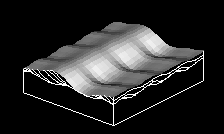










In geology, cross-bedding, also known as cross-stratification, is layering within a stratum and at an angle to the main bedding plane. The sedimentary structures which result are roughly horizontal units composed of inclined layers. The original depositional layering is tilted, such tilting not being the result of post-depositional deformation. Cross-beds or "sets" are the groups of inclined layers, which are known as cross-strata.
Cross-bedding forms during deposition on the inclined surfaces of bedforms such as ripples and dunes; it indicates that the depositional environment contained a flowing medium (typically water or wind). Examples of these bedforms are ripples, dunes, anti-dunes, sand waves, hummocks, bars, and delta slopes.[1] Environments in which water movement is fast enough and deep enough to develop large-scale bed forms fall into three natural groupings: rivers, tide-dominated coastal and marine settings.[2]
- ^ Collinson, J.D., Thompson, D.B., 1989, Sedimentary Structures (2nd ed): Academic Division of Unwin Hyman Ltd, Winchester, MA, XXX p.
- ^ Ashley, G. (1990) "Classification of Large-Scale Subaqueous Bedforms: A New Look At An Old Problem." Journal of Sedimentary Petrology. 60.1: 160-172. Print.